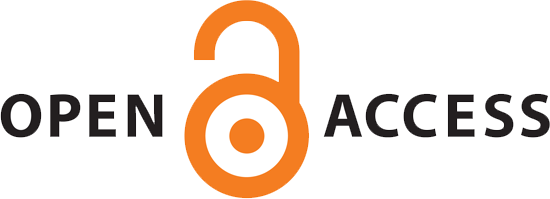Risk Stratification in Pediatric Cardiac Catheterization Using the CRISP Score: A Cross-Sectional Study in Indonesia
Abstract
Background: Cardiac catheterization is an essential procedure in managing pediatric congenital heart disease, providing a less invasive alternative to thoracotomy. However, adverse events remain a concern, especially in high-risk patients. The CRISP (Cardiac Risk in Pediatric) score, developed by the Congenital Cardiac Intervention Study Consortium (CCISC), predicts serious adverse events (SAEs) in pediatric cardiac catheterization. Despite its reliability, CRISP has not been implemented in Indonesia. This study evaluates its predictive ability at Dr. Wahidin Sudirohusodo Hospital, Makassar.
Methods: A prospective cross-sectional study was conducted from November 2024 to January 2025. Pediatric patients (<18 years) undergoing elective cardiac catheterization were assigned CRISP scores pre-procedure, and adverse events were recorded. The relationship between CRISP categories and SAE incidence was analyzed.
Results: Among 70 patients, the majority of patients were categorized as CRISP I (67.1%), followed by CRISP II (21.4%), CRISP III (5.7%), and CRISP IV (5.7%), with no CRISP V cases. There were 6 cases (8.6%) of serious adverse events identified, consisting of 4 cases (5.71%) of cardiac arrest and 2 cases (2.89%) of bleeding. A significant correlation was found between higher CRISP risk categories and SAE incidence (p < 0.001). SAEs occurred exclusively in CRISP III (50% incidence) and CRISP IV (100% incidence) patients.
Conclusion: The CRISP score effectively stratifies risk in pediatric cardiac catheterization. Higher CRISP categories correlate with increased SAE incidence, supporting its predictive validity. Routine CRISP implementation could enhance pre-procedural planning, risk mitigation, and patient safety in Indonesia. Further studies with larger sample sizes are recommended.
[2] Deutsch N, Swink J, Matisoff AJ, Olivieri LJ, Cross RR, Waberski AT, et al. Anesthetic considerations for magnetic resonance imaging-guided right-heart catheterization in pediatric patients: A single institution experience. Paediatr Anaesth. 2019;29(1):8–15.
[3] O’Byrne ML, Huang J, Asztalos I, Smith CL, Dori Y, Gillespie MJ, et al. Pediatric/Congenital Cardiac Catheterization Quality: An Analysis of Existing Metrics. JACC Cardiovasc Interv. 2020; 13(24):2853–64.
[4] Ogawa Y, Yamana H, Noda T, Kishimoto M, Yoshihara S, Kanaoka K, et al. Severe Complications after General Anesthesia versus Sedation during Pediatric Diagnostic Cardiac Catheterization for Ventricular Septal Defect. J Clin Med. 2022;11(17):5165.
[5] Santos PE, Ballesteros F, Rodríguez A, Luis Zunzunegui and J. Use of a pediatric risk score for cardiac catheterization in a Spanish population with congenital heart disease. REC: interventional cardiology (English Edition). 2024;
[6] Nykanen DG, Forbes TJ, Du W, Divekar AA, Reeves JH, Hagler DJ, et al. CRISP: Catheterization RISk Score for Pediatrics: A Report from the Congenital Cardiac Interventional Study Consortium (CCISC). Catheter Cardiovasc Interv. 2016 Feb 1;87(2):302-9.
[7] Jayaram N, Beekman RH, Benson L, Holzer R, Jenkins K, Kennedy KF, et al. Adjusting for risk associated with pediatric and congenital cardiac catheterization: A report from the NCDR IMPACT registry. Circulation. 2015;132(20).
[8] Tokel K, Gümüş A, Ayabakan C, Varan B, Erdoğan İ. Complications of cardiac catheterization in children with congenital heart disease. Turk J Pediatr. 2018; 60(6):675-683.
[9] Feltes TF, Bacha E, Beekman RH, Cheatham JP, Feinstein JA, Gomes AS, et al. Indications for cardiac catheterization and intervention in pediatric cardiac disease: A scientific statement from the American Heart Association. Circulation. 2011; 123(22):2607–52.
[10] del Cerro MJ, Moledina S, Haworth SG, Ivy D, Al Dabbagh M, Banjar H, et al. Cardiac catheterization in children with pulmonary hypertensive vascular disease: Consensus statement from the Pulmonary Vascular Research Institute, Pediatric and Congenital Heart Disease Task Forces. Pulm Circ. 2016;6(1):118-25.
[11] Mehta R, Lee KJ, Chaturvedi R, Benson L. Complications of pediatric cardiac catheterization: a review in the current era. Catheter Cardiovasc Interv. 2008; 72(2):278-85.
[12] Mah DY, Porras D, Bergersen L, Marshall AC, Walsh EP, Triedman JK. Incidence of and risk factors for catheterization-induced complete heart block in the pediatric cardiac catheterization laboratory. Circ Arrhythm Electrophysiol. 2014;7(1):127-33.
[13] Gerçeker E, Yilmazer MM, Meşe T, Vuran G, Zihni C. Validation of the Turkish Version of the Catheterization Risk Score for Pediatrics. Anatol J Cardiol. 2022;26(12) :864-871.
[14] Hill KD, Du W, Fleming GA, Forbes TJ, Nykanen DG, Reeves J, et al. Validation and refinement of the catheterization RISk score for pediatrics (CRISP score): An analysis from the congenital cardiac interventional study consortium. Catheterization and Cardiovascular Interventions. 2019;93(1):97–104.
| Files | ||
| Issue | Article in Press |
|
| Section | Research Article(s) | |
| Keywords | ||
| Congenital heart disease CRISP score Pediatric cardiac catheterization Serious adverse events Risk prediction | ||
| Rights and permissions | |

|
This work is licensed under a Creative Commons Attribution-NonCommercial 4.0 International License. |




